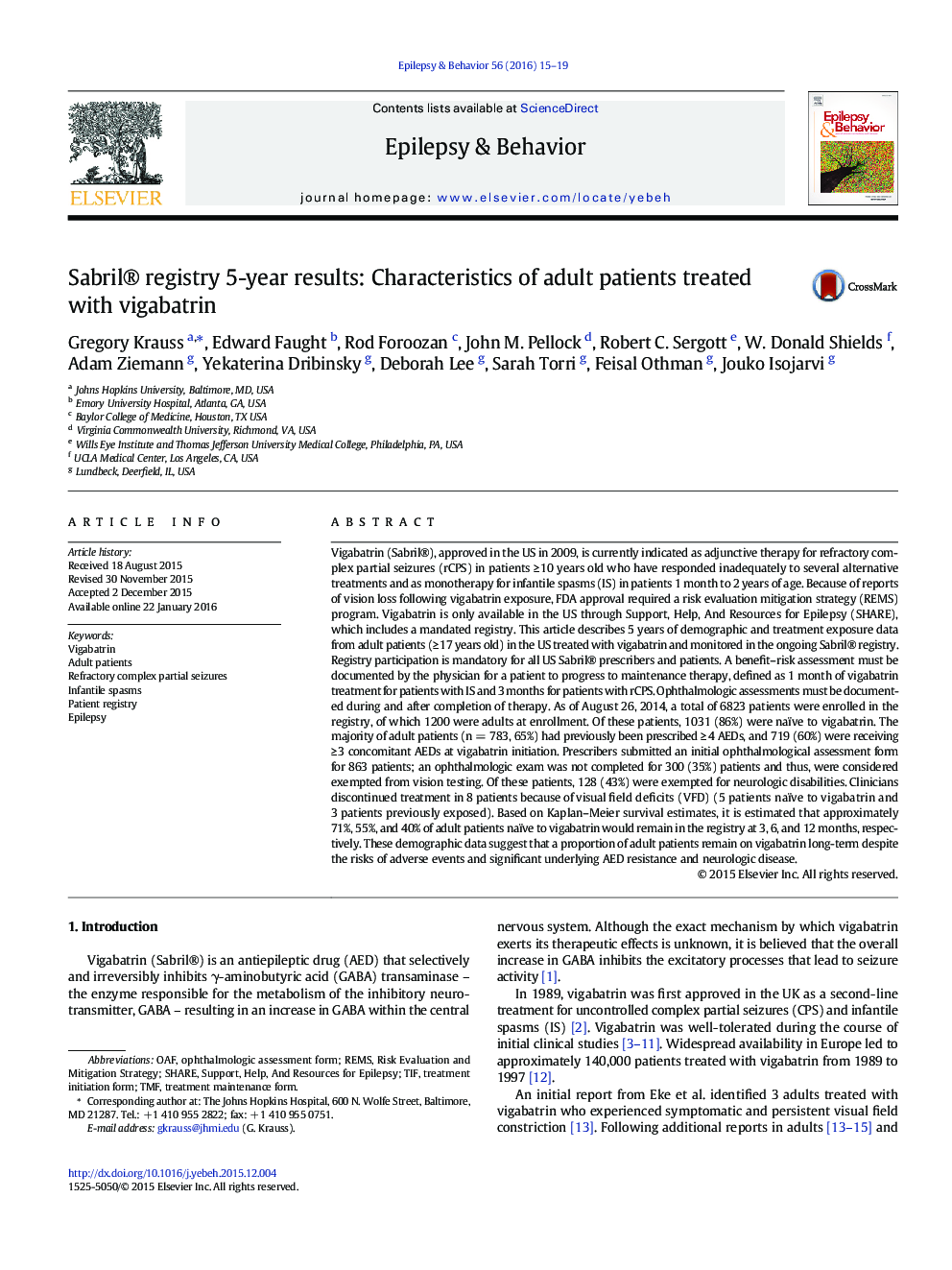| کد مقاله | کد نشریه | سال انتشار | مقاله انگلیسی | نسخه تمام متن |
|---|---|---|---|---|
| 6010619 | 1579834 | 2016 | 5 صفحه PDF | دانلود رایگان |

- US patients can only receive vigabatrin through an FDA-mandated registry
- From 2009 to 2014, a total of 1200 adult patients (â¥Â 17 years) were enrolled
- Most adults (86%) were vigabatrin-naïve and 65% had previously been prescribed â¥Â 4 AEDs
- About 35% of adult patients with submitted OAFs were exempted from vision testing
- Survival estimates show 55% of vigabatrin-naive patients would remain in the registry at 6Â months
Vigabatrin (Sabril®), approved in the US in 2009, is currently indicated as adjunctive therapy for refractory complex partial seizures (rCPS) in patients â¥Â 10 years old who have responded inadequately to several alternative treatments and as monotherapy for infantile spasms (IS) in patients 1 month to 2 years of age. Because of reports of vision loss following vigabatrin exposure, FDA approval required a risk evaluation mitigation strategy (REMS) program. Vigabatrin is only available in the US through Support, Help, And Resources for Epilepsy (SHARE), which includes a mandated registry. This article describes 5 years of demographic and treatment exposure data from adult patients (â¥Â 17 years old) in the US treated with vigabatrin and monitored in the ongoing Sabril® registry. Registry participation is mandatory for all US Sabril® prescribers and patients. A benefit-risk assessment must be documented by the physician for a patient to progress to maintenance therapy, defined as 1 month of vigabatrin treatment for patients with IS and 3 months for patients with rCPS. Ophthalmologic assessments must be documented during and after completion of therapy. As of August 26, 2014, a total of 6823 patients were enrolled in the registry, of which 1200 were adults at enrollment. Of these patients, 1031 (86%) were naïve to vigabatrin. The majority of adult patients (n = 783, 65%) had previously been prescribed â¥Â 4 AEDs, and 719 (60%) were receiving â¥Â 3 concomitant AEDs at vigabatrin initiation. Prescribers submitted an initial ophthalmological assessment form for 863 patients; an ophthalmologic exam was not completed for 300 (35%) patients and thus, were considered exempted from vision testing. Of these patients, 128 (43%) were exempted for neurologic disabilities. Clinicians discontinued treatment in 8 patients because of visual field deficits (VFD) (5 patients naïve to vigabatrin and 3 patients previously exposed). Based on Kaplan-Meier survival estimates, it is estimated that approximately 71%, 55%, and 40% of adult patients naïve to vigabatrin would remain in the registry at 3, 6, and 12 months, respectively. These demographic data suggest that a proportion of adult patients remain on vigabatrin long-term despite the risks of adverse events and significant underlying AED resistance and neurologic disease.
Journal: Epilepsy & Behavior - Volume 56, March 2016, Pages 15-19